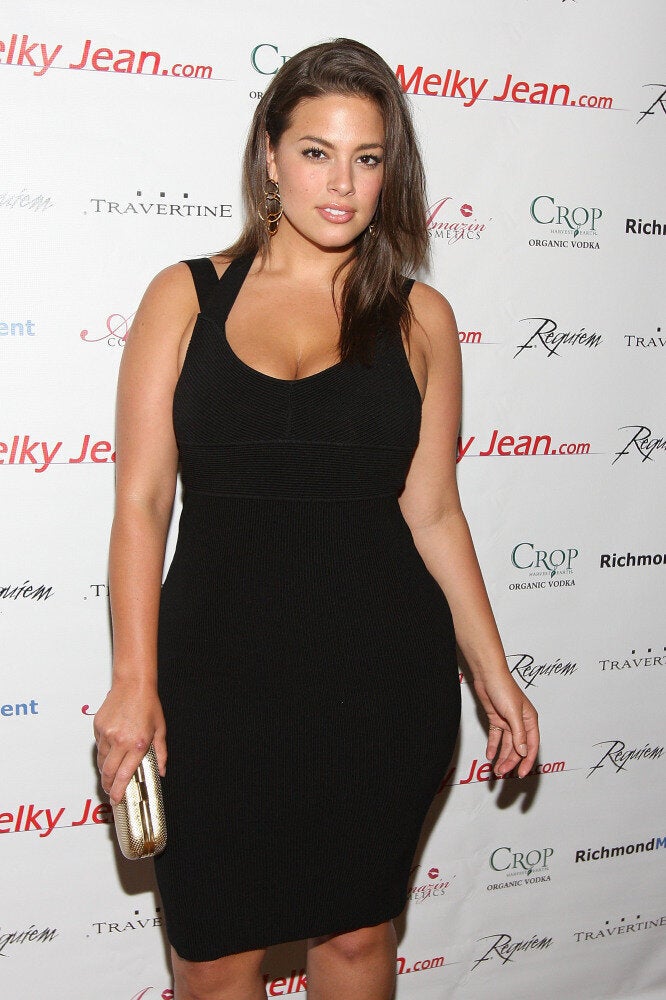
Sorting through the sparkle and fringe of Forever XXI, it's easy to get lost. Sometimes, I pick up an item free of beads or odd colours, checking the price tag for a potential buy. Then I look up and see that big sign. That sign that says "plus-size." That sign that screams "I'm different from the other clothing in this store." That sign that makes me back away slowly, pretending I was never there to begin with.
I don't feel that my body is properly represented in straight sizing or plus sizing, as neither properly serve me -- I'm that frustrating in-between size thanks to proportions that can go either way or neither depending on the situation. Walking into one-size fits all stores like Brandy Melville and partial-clothing type stores like American Apparel tend to result in a rant that just earns me eye rolls from the people I'm shopping with. Sometimes I find a winner in one of these stores, but I usually leave them in a huff.
My favourite line to say in times like these? "I can fit one boob into this."
By separating two body types into "plus-size" and "straight size," the fashion industry is telling us that we have to either identify as the same size as the general public or not. According to retailers there is a plus-size and a straight size. Sometimes, a petite size.
"Plus-size" is defined as "clothing for people of a size larger than the normal range." But the average size of a North American woman is between a size 12 and 14. Yet, plus sizing starts at size 14, and in the U.K. at a size 12. This is where the problem lies. If retailers are going to separate their "normal lines" from plus-sized ones, shouldn't it be the other way around to truly accommodate for the average size of woman? But then again, "plus-size" generalizes body types as well.
Labelling sizing in this way separates us rather than unifying us. Fashion and body types are not black or white.
The problem with plus-size clothing is that, like other clothing, it assumes that every size means specific proportions. While a large bust size may prevent someone from shopping straight sizes, the smallest plus-size may hang disproportionately because of a smaller stomach or slimmer waistline. Female sizing may have started to account for plus-sized women who otherwise would not be able in straight-size clothing, but it's yet to account for women's different proportions.
The amount of times I've tried on a top and hoped that there was a little less fabric in the arm, or had more fabric in the bust area are countless. Plus-sizes are supposed to accommodate for those who aren't flattered by straight sizes, not idealize plus-size women as having the same proportions.
Mariana Leung wrote for xoJane that "full-figured shoppers could be very busty, pear-shaped or muscular. One fit model cannot possibly cover every body shape in that size range." She hypothesized that if designers want to service women of all sizes they need to efficiently allocate their resources. "Collaborate more with influencers who represent your target shopper for styling and fit feedback," she wrote. "See them as allies, not a battleground."
A lot of the time plus-size equals tall. My 5'3" frame begs to differ. I want a top that fits my bust. Not a poncho.
In 2012, Ryerson fashion professor and CEO of the Ben Barry Modeling agency, Ben Barry, conducted a study in which he showed 2,500 women, between the ages of 14 and 65 and ranging in size 0-18, an array of mock fashion advertisements where models of differing size, race and age all wore the same dress. According to Elle, the study revealed that women are most likely to buy clothing worn by models who reflect their bodies.
Alex LaRosa, a self-proclaimed "plus-size model who's visibly plus-size, told Huffington Post Live that plus-size women aren't represented in plus-size lines. "You're using sizes eight, 10 and 12, when sometimes the stores don't even start carrying the clothes until size 14," she said. "You're telling women, 'You want to look like these models. This is what you should look like, but it's never going to happen.'"
"Women on the street don't relate to all this talk of plus-sizes, and it creates an 'us and them' mentality within the industry," size 16 supermodel Crystal Renn told The Independent in an interview.
It's an "us vs. them" in the world where there is no collective "us," who share the exact same bodies nor proportions. More so, it's our common differences that unify "us." The size two with longer arms or size 14 with shorter legs are unified by fashion's inability to accommodate for different body types. Retail is forgetting that size differences also include proportions.
We need plus-sized clothing, there's no doubt in that. The world of plus-size fashion, however, isn't all bad. Some brands like BooHoo boast lines for plus-sized women that aren't just larger shirts or dresses. They are clothing articles designed to flatter curves and other positive attributes plus-size women show. Plus-size fashion isn't a problem, it's just a first step rather than a solution.
While having plus-size is a nice thought, it often fails to properly fit women who don't fit in straight sizing -- which would be less of a problem retailers didn't label these clothes as strictly for plus-sized women. It's the promise the label serves that it doesn't live up to. These labels make women insecure although they are arbitrary.
All bodies are unique. It's time to make clothing more women-friendly than petite friend or plus friendly.
ALSO ON HUFFPOST:
